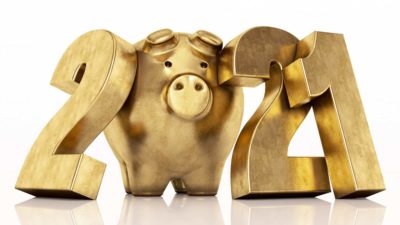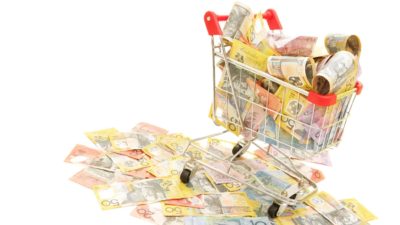Fool contributor Peter Phan digs for treasure among small and large cap stocks on the ASX.
In 1999 and again in 2005, Warren Buffett said that he could make 50% per year returns on shares. That is, if he was investing with small amounts of capital below $1m. That wasn't hot air, Buffett achieved those returns in the 1950s before he was hampered by the massive capital he now invests.
50% per year compounding returns mean your money doubles every 1.7 years. Put simply, $10,000 invested today compounding at 50% per year becomes $1,000,000 in just over 11 years. That is mind-boggling.
But hey, we are not Buffett, so aren't we getting a bit ahead of ourselves? Perhaps. So let's halve the return to only 25% per annum. $10,000 invested today compounding at 25% per year becomes more than one million dollars in 21 years.
Even at 14% per annum compounding, $10,000 turns into $1 million in a little over 35 years. That's why we urge investors to both start young and encourage their children to do the same.
Buffett even said that it is much easier to achieve that performance in the present because information is much readily available.
Road Map to Riches
So how do we do it?
Fortunately, Buffett provided a road map. He said: "You have to turn over a lot of rocks to find those little anomalies. You have to find the companies that are off the map – way off the map."
As at Aug 2011, there are 2225 number of listed companies and securities on the ASX. Buffett recommended that investors start alphabetically with the companies starting with the letter "A", and to go through the whole list.
As we said many times, investing is simple, but not easy. Luckily, your task will be made slightly easier, thanks to the internet, stock screens, and of course, the crew here at The Motley Fool.
Treasure Hunting
A simple way to begin the hunt is using the PE ratio. Your investment decision will not be solely based on this measure, but you have to start somewhere. If you purchase a business, the first (but not the only) consideration will be how much money can you make and how long it takes to get a full return of your capital. The PE ratio is just a reflection of this common sense.
Our screening on 1 October 2011 using the basic criteria of PE ratio more than 0 (meaning you cut out all loss making companies) and PE ratio less than 10 generated 319 results. From this list we have selected two groups of shares which we believe will provide market beating performance in total returns. Total returns include returns from both dividends and capital growth.
Cheap small cap growth stocks
Here is a list of 5 stocks we consider to be cheap small cap growth stocks.
AMA Group Limited (ASX: AMA) has previously been mentioned. Since that time, the company announced a dividend of 1 cent fully franked, and the share price has gone from 10.5 cents to 12 cents. The current market capitalisation of $34million is still cheap compared to free cashflow of $7.5m per year. The market is not factoring any growth at all. The debt is not of major concern, given the strong cashflow.
InfomediaLimited (ASX:IFM) is a provider of electronic catalogues for car spare parts. The company has been badly affected by a rampaging AUD, but at PE 5.6 and healthy cashflow underpinning a good dividend of 13% fully franked, we believe downside is very limited from here on. There will be a small debt due to a recent acquisition, but nothing that will implode the business.
Koon Holdings Limited (ASX:KNH) is a civil engineering and construction company operating in Singapore. Its order book has grown by 100% this year. The market cap of $33m implies a PE of 4.3. The share is trading at book value, and there is very little debt.
United Overseas Australia Limited (ASX:UOS) is a holding company for property development businesses in Kuala Lumpur, Malaysia. UOS trades at 45 cents, implying a market capitalisation of $450m. This is PE 4.6. The company has a massive balance sheet, sitting on $343m in cash and $447m in investment properties. It is selling at less than half of its book value, and the book value continues to grow (and has been growing for over 10 years). The company recently announced a capital return of 8 cents per share.
Zicom Group Limited (ASX: ZGL) is a manufacturer in Singapore. It is trading at PE 5.28 and the current share price is less than book value. Earnings increased 40% last year.
A portfolio of these 5 small caps has a PE of less than 6. The dividend at about 6% is not shabby either.
Good businesses at fair price
Here is a list of 5 stocks we consider to be quality businesses at good prices:
QBE Insurance Group Limited (ASX: QBE) is at PE 10 with a dividend yield of 10%.
Flight Centre Limited (ASX: FLT) is at PE 9.7 based on underlying profit. Management expects growth of 10 to 15% per year. Yielding 5.3% fully franked.
Forge Group Limited (ASX: FGE) is trading at PE 9.4 with substantial growth in the coming years due to servicing mining industry.
BHP Biliton Limited (ASX: BHP) needs no introduction. PE less than 9.
Macquarie Group Limited (ASX: MQG) is trading at PE 8.3. Betting that a bunch of smart bankers will continue to make money is logical.
The Motley Fool's purpose is to educate, amuse and enrich investors. Are you looking for more small-cap stock ideas? Readers can click here for a free report titled 2 Safe Ways To Play The Commodities Boom.
Fool contributor Peter Phan owns shares in AMA, KNH, UOS, ZGL and QBE. The Motley Fool's disclosure policy is a treasure island on the ASX. This article has been authorised by Bruce Jackson.








